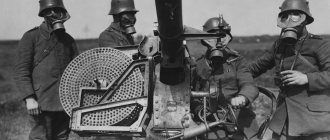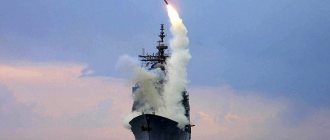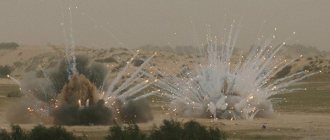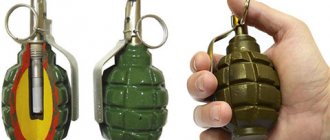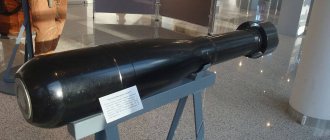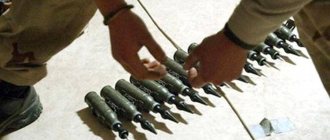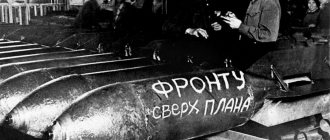For most of history, man used all kinds of bladed weapons to destroy his own kind, from a simple stone ax to very advanced and difficult to manufacture metal tools. Around the 11th–12th centuries, guns began to be used in Europe, and thus humanity became acquainted with the most important explosive - black gunpowder.
This was a turning point in military history, although it would take another eight centuries or so for firearms to completely replace sharpened steel on the battlefield. In parallel with the progress of cannons and mortars, explosives developed - not only gunpowder, but also all kinds of compositions for loading artillery shells or making landmines. The development of new explosives and explosive devices continues actively today.
Today dozens of explosives are known. In addition to military needs, explosives are actively used in mining, in the construction of roads and tunnels. However, before talking about the main groups of explosives, it is worth mentioning in more detail the processes occurring during an explosion and understanding the principle of action of explosives.
Explosives: what is it?
Explosives are a large group of chemical compounds or mixtures that, under the influence of external factors, are capable of rapid, self-sustaining and uncontrollable reactions releasing large amounts of energy. Simply put, a chemical explosion is the process of converting the energy of molecular bonds into thermal energy. Usually its result is a large amount of hot gases, which perform mechanical work (crushing, destruction, movement, etc.).
The classification of explosives is quite complex and confusing. Explosives include substances that disintegrate not only during explosion (detonation), but also through slow or rapid combustion. The last group includes gunpowder and various types of pyrotechnic mixtures.
In general, the concepts of “detonation” and “deflagration” (combustion) are key to understanding the processes of a chemical explosion.
Detonation is the rapid (supersonic) propagation of a compression front with an accompanying exothermic reaction in an explosive. In this case, the chemical transformations proceed so rapidly and such an amount of thermal energy and gaseous products are released that a shock wave is formed in the substance. Detonation is the process of the fastest, one might say, avalanche-like involvement of a substance in the reaction of a chemical explosion.
Deflagration, or combustion, is a type of redox chemical reaction during which its front moves through a substance due to normal heat transfer. Such reactions are well known to everyone and are often encountered in everyday life.
It is curious that the energy released during the explosion is not that great. For example, during the detonation of 1 kg of TNT, it is released several times less than during the combustion of 1 kg of coal. However, during an explosion this happens millions of times faster, all the energy is released almost instantly.
It should be noted that the speed of detonation propagation is the most important characteristic of explosives. The higher it is, the more effective the explosive charge is.
To start the process of a chemical explosion, exposure to an external factor is necessary; it can be of several types:
- mechanical (puncture, impact, friction);
- chemical (reaction of a substance with an explosive charge);
- external detonation (explosion in close proximity to an explosive);
- thermal (flame, heating, spark).
It should be noted that different types of explosives have different sensitivity to external influences.
Some of them (for example, black powder) respond well to thermal effects, but practically do not respond to mechanical and chemical effects. And to detonate TNT, only detonation is needed. Mercury fulminate reacts violently to any external stimulus, and there are some explosives that detonate without any external influence at all. The practical use of such “explosive” explosives is simply impossible.
Butane
Butane, a gaseous compound that is technically derived from petroleum. It came from a naturally decaying substance that is produced by the distillation of fossil fuels. The main uses of butane are for backyard cooking, camping, and cigarette lighters. Vehicles and heating equipment use delicate petroleum gas, which is a combination of butane and petroleum.
If the leak remains invisible and ignites in a fire, the butane may explode in areas with limited ventilation. On March 6, 2022, a butane laboratory hash exploded in Michigan (Graylord). Authorities suspected that the main culprit was creating an undiluted chemical by blasting a marijuana plant with butane.
The people who ran the laboratory were physically injured. The two people involved were taken to a nearby hospital before officials arrived. Due to their injuries, the two main participants in the crime were transferred to the Specialized Burns Unit.
Basic properties of explosives
The main ones are:
- temperature of explosion products;
- heat of explosion;
- detonation speed;
- brisance;
- high explosiveness.
The last two points should be addressed separately. The brisance of an explosive is its ability to destroy the surrounding environment (rock, metal, wood). This characteristic largely depends on the physical state in which the explosive is located (degree of grinding, density, homogeneity). Brisance directly depends on the speed of detonation of the explosive - the higher it is, the better the explosive can crush and destroy surrounding objects.
High explosives are usually used to fill artillery shells, aerial bombs, mines, torpedoes, grenades and other ammunition. This type of explosive is less sensitive to external factors; external detonation is necessary to detonate such an explosive charge. Depending on their destructive power, high explosives are divided into:
- High power: hexogen, tetryl, oxogen;
- Medium power: TNT, melinite, plastid;
- Reduced power: explosives based on ammonium nitrate.
The higher the explosiveness of an explosive, the better it will destroy the body of a bomb or projectile, impart more energy to the fragments and create a more powerful shock wave.
An equally important property of explosives is its high explosiveness. This is the most general characteristic of any explosive; it shows how destructive a particular explosive is. High explosiveness directly depends on the amount of gases that are formed during the explosion. It should be noted that brisance and high explosiveness, as a rule, are not related to each other.
High explosiveness and brisance determine what we call the power or force of an explosion. However, for various purposes it is necessary to select appropriate types of explosives. High explosiveness is very important for shells, mines and aerial bombs, but for mining operations, explosives with a significant level of high explosiveness are more suitable. In practice, the selection of explosives is much more complicated, and in order to choose the right explosive, all its characteristics must be taken into account.
There is a generally accepted method for determining the power of various explosives. This is the so-called TNT equivalent, when the power of TNT is conventionally taken as unity. Using this method, it can be calculated that the power of 125 grams of TNT is equal to 100 grams of hexogen and 150 grams of ammonite.
Another important characteristic of explosives is their sensitivity. It is determined by the probability of an explosive explosion when exposed to one or another factor. The safety of production and storage of explosives depends on this parameter.
To better show how important this characteristic of an explosive is, it can be said that the Americans have developed a special standard (STANAG 4439) for the sensitivity of explosives. And they had to do this not because of a good life, but after a series of serious accidents: an explosion at the American Bien Ho Air Force Base in Vietnam killed 33 people, as a result of explosions on the Forrestal aircraft carrier, about 80 aircraft were damaged, and after the detonation of missiles on the USS Oriskany (1966). So what’s good is not just a powerful explosive, but one that detonates exactly at the right moment - and never again.
All modern explosives are either chemical compounds or mechanical mixtures. The first group includes hexogen, TNT, nitroglycerin, picric acid. Chemical explosives are usually produced by nitration of various types of hydrocarbons, which leads to the introduction of nitrogen and oxygen into their molecules. The second group includes ammonium nitrate explosives. These types of explosives usually contain substances rich in oxygen and carbon. To increase the explosion temperature, metal powders are often added to the mixture: aluminum, beryllium, magnesium.
In addition to all of the above properties, any explosive must be chemically resistant and suitable for long-term storage. In the 80s of the last century, the Chinese were able to synthesize a powerful explosive - tricyclic urea. Its power was twenty times greater than TNT. The problem was that a few days after production, the substance decomposed and turned into mucus, unsuitable for further use.
1) Hexogen is an explosive drug
Back in 1899, for the treatment of inflammation in the urinary tract, the German chemist Hans Genning patented the drug hexogen, an analogue of the well-known hexogen. But doctors soon lost interest in him due to side intoxication. Only thirty years later it became clear that hexogen turned out to be a powerful explosive, and more destructive than TNT. A kilogram of hexogen explosive will produce the same destruction as 1.25 kilograms of TNT. Pyrotechnicians mainly characterize explosives as high explosive and brisant. In the first case, they talk about the volume of gas released during the explosion. Like, the larger it is, the more powerful the high explosive. Brisance, in turn, depends on the rate of gas formation and shows how explosives can crush surrounding materials. During an explosion, 10 grams of hexogen release 480 cubic centimeters of gas, while TNT releases 285 cubic centimeters. In other words, hexagen is 1.7 times more powerful than TNT in terms of high explosiveness and 1.26 times more dynamic in terms of explosiveness. However, the media most often uses a certain average indicator. For example, the “Baby” atomic charge, dropped on the Japanese city of Hiroshima on August 6, 1945, is estimated at 13–18 kilotons of TNT. Meanwhile, this does not characterize the power of the explosion, but indicates how much TNT is needed to release the same amount of heat as during the specified nuclear bombing.
Classification of explosives
According to their explosive properties, explosives are divided into:
- Initiating. They are used to detonate other explosives. The main differences between explosives of this group are their high sensitivity to initiating factors and high detonation speed. This group includes: mercury fulminate, diazodinitrophenol, lead trinitroresorcinate and others. As a rule, these compounds are used in igniter caps, ignition tubes, detonator caps, squibs, and self-destructors;
- High explosives. This type of explosive has a significant level of high explosive and is used as the main charge for the vast majority of ammunition. These powerful explosives differ in their chemical composition (N-nitramines, nitrates, other nitro compounds). Sometimes they are used in the form of various mixtures. High explosives are also actively used in mining, when laying tunnels, and carrying out other engineering work;
- Propellant explosives. They are a source of energy for throwing shells, mines, bullets, grenades, as well as for the movement of missiles. This class of explosives includes gunpowder and various types of rocket fuel;
- Pyrotechnic compositions. Used to equip special ammunition. When burned, they produce a specific effect: lighting, signaling, incendiary.
Explosives are also divided according to their physical state into:
- Liquid. For example, nitroglycol, nitroglycerin, ethyl nitrate. There are also various liquid mixtures of explosives (panclastite, Sprengel explosives);
- Gaseous;
- Gel-like. If you dissolve nitrocellulose in nitroglycerin, you get the so-called explosive jelly. This is an extremely unstable, but quite powerful explosive gel-like substance. Russian revolutionary terrorists loved to use it at the end of the 19th century;
- Suspensions. A fairly large group of explosives that are used today for industrial purposes. There are various types of explosive suspensions in which the explosive or oxidizer is a liquid medium;
- Emulsion explosives. A very popular type of explosive these days. Often used in construction or mining work;
- Solid. The most common group of explosives. This includes almost all explosives used in military affairs. They can be monolithic (TNT), granular or powdery (RDX);
- Plastic. This group of explosives has plasticity. Such explosives are more expensive than regular ones, so they are rarely used to fill ammunition. A typical representative of this group is plastid (or plastite). It is often used during sabotage to undermine structures. In terms of its composition, plastid is a mixture of hexogen and some kind of plasticizer;
- Elastic.
Danger level
Also, as an example, we can consider explosive substances according to their degree of danger. Hydrocarbon-based gases come first. These substances are prone to random detonation. These include chlorine, ammonia, freons, and so on. According to statistics, almost a third of incidents in which explosive substances are the main actors are associated with hydrocarbon-based gases.
Next comes hydrogen, which under certain conditions (for example, when combined with air in a ratio of 2:5) becomes the most explosive. Well, rounding out this top three in terms of degree of danger are a couple of liquids that are prone to ignition. First of all, these are fumes from fuel oil, diesel fuel and gasoline.
A little history of VV
The first explosive substance invented by mankind was black powder. It is believed that it was invented in China back in the 7th century AD. However, reliable evidence of this has not yet been found. In general, many myths and obviously fantastic stories have been created around gunpowder and the first attempts to use it.
There are ancient Chinese texts that describe mixtures similar in composition to black black powder. They were used as medicines and also for pyrotechnic shows. In addition, there are numerous sources claiming that in the following centuries the Chinese actively used gunpowder to produce rockets, mines, grenades and even flamethrowers. True, illustrations of some types of these ancient firearms cast doubt on the possibility of their practical use.
Even before gunpowder, Europe began to use “Greek fire” - a flammable explosive, the recipe for which, unfortunately, has not survived to this day. “Greek fire” was a flammable mixture that not only could not be extinguished by water, but even became even more flammable in contact with it. This explosive was invented by the Byzantines; they actively used “Greek fire” both on land and in sea battles, and kept its recipe in the strictest confidence. Modern experts believe that this mixture included oil, tar, sulfur and quicklime.
Gunpowder first appeared in Europe around the middle of the 13th century, and it is still unknown how exactly it got to the continent. Among the European inventors of gunpowder, the names of the monk Berthold Schwartz and the English scientist Roger Bacon are often mentioned, although historians do not have a consensus. According to one version, gunpowder, invented in China, came to Europe through India and the Middle East. One way or another, already in the 13th century, Europeans knew about gunpowder and even tried to use this crystalline explosive for mines and primitive firearms.
For many centuries, gunpowder remained the only type of explosive that man knew and used. It was only at the turn of the 18th–19th centuries, thanks to the development of chemistry and other natural sciences, that the development of explosives reached new heights.
At the end of the 18th century, thanks to the French chemists Lavoisier and Berthollet, the so-called chlorate gunpowder appeared. At the same time, “silver fulminate” was invented, as well as picric acid, which in the future began to be used to equip artillery shells.
In 1799, the English chemist Howard discovered “mercury fulminate,” which is still used in caps as an initiating explosive. At the beginning of the 19th century, pyroxylin was obtained - an explosive substance that could not only be used to load projectiles, but also to make smokeless gunpowder from it.
Nitroglycerin was first synthesized in 1847, but the explosive proved too unstable and dangerous to produce and store. A little later, this problem was partially solved by the famous Alfred Nobel, who proposed mixing nitroglycerine with clay. This is how dynamite turned out. This is a powerful explosive, but it is highly sensitive. During the First World War they tried to load shells with dynamite, but this idea was quickly abandoned. Dynamite has been used in mining for a long time, but these days this explosive has not been produced for a long time.
In 1863, German scientists discovered TNT, and in 1891, industrial production of this explosive began in Germany. In 1897, the German chemist Lenze synthesized hexogen, one of the most powerful and widespread explosives today.
The development of new explosives and explosive devices has continued throughout the past century, and research in this direction continues today.
In 1942, the American chemist Bachmann developed a new explosive, similar to hexogen, but much more powerful. The new explosive was called HMX; in terms of its effectiveness, one kilogram of this explosive is equal to four kilograms of TNT.
In the 60s, the American company EXCOA offered the Pentagon a new explosive based on hydrazine, which was supposedly 20 times more powerful than TNT. However, this explosive also had one noticeable drawback - the absolutely disgusting smell of an abandoned station toilet. The test showed that the new substance was only 2-3 times more powerful than TNT, and they decided to abandon its use. After this, EXCOA proposed another way to use explosives: to make trenches with it.
The substance was poured onto the ground in a thin stream and then detonated. Thus, in a matter of seconds it was possible to get a full-profile trench without extra effort. Several sets of explosives were sent to Vietnam for combat testing. The end of this story was funny: the trenches created by explosion had such a disgusting smell that the soldiers refused to be in them.
In the late 80s, the Americans developed a new explosive - CL-20. According to some media reports, its power is almost twenty times greater than TNT. However, due to its high price ($1,300 per 1 kg), large-scale production of the new explosive was never started.
Picric acid
Picric acid is a mass of wet crystal that is yellow in color. The synthesis of dyes corresponds to production, and the creation of colored glass is part of its use. Since picric acid is toxic in nature, it has been recommended that its use be avoided.
This chemical was involved in one of the largest explosions created by man before Hiroshima. The US exported arms to its accomplice France and Britain throughout World War II in 1917. 3,000 tons of ammunition were carried on a 310-foot (98 m) ship known as the SS Mont Blanc, 13 times the size of the Statue of Liberty. Substances included included picric acid and TNT, including aircraft fuel, amounting to 400 barrels that were removed at the last minute.
Fake devices[edit]
The US Department of Justice warned in the National Institute of Justice publication, Guide to the Selection of Commercial Explosives Detection Systems for Law Enforcement Applications (NIJ Guide 100-99), about the ongoing trend of sales of equipment to detect “counterfeit” explosives. to unsuspecting consumers. The report mentions by name the Quadro Tracker, an apparent dowsing rod with a free-swinging radio antenna boom with no functioning internal components. On August 8–9, 2005, the Navy's Explosive Ordnance Disposal Engineering Office, through the U.S. Counter-Terrorism Task Force, tested the SNIFFEX and concluded that "the portable SNIFFEX detector does not work" [20]
... There is a fairly large community of people around the world who believe in dowsing: the ancient practice of using branching sticks, swinging rods and pendulums to find underground water and other materials. These people believe that many types of materials can be found using various dowsing techniques. Dowsers claim that a dowsing device will respond to any hidden anomalies, and it takes years of practice to use the device with sensing (the ability to make the device respond only to the materials being sought). Modern dowsers are developing various new methods to add discrimination to their devices. These new methods include molecular frequency discrimination (MFD) and harmonic induction discrimination (HID). MFD has taken the form of everything from placing a photocopy of a Polaroid photograph of the desired material in the handle of the device, to the use of dowsing rods in combination with frequency generation electronics (function generators). None of these attempts to create devices that can detect certain materials, such as explosives (or any materials for that matter), have been successful in controlled, double-blind scientific tests.
In fact, all testing of these inventions has shown that these devices perform no better than chance... [21]
A number of counterfeit dowsing detection devices are in widespread use in Iraq and Thailand, notably the ADE 651 and GT200, where they reportedly failed to detect bombs that killed hundreds and injured thousands more. [ citation needed
] Additional names for fake dowsing rod detectors include ADE101, ADE650, Alpha 6, XK9, SNIFFEX, HEDD1, AL-6D, H3TEC, PK9.

